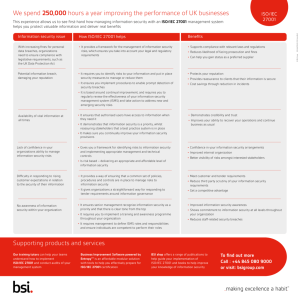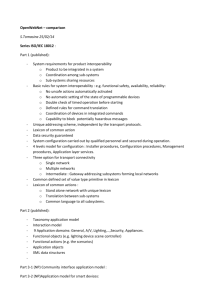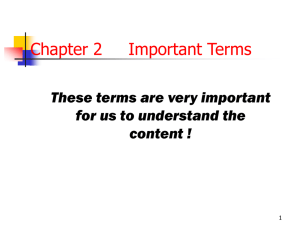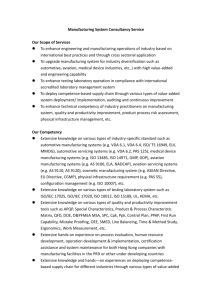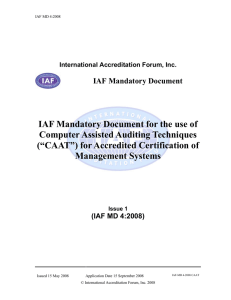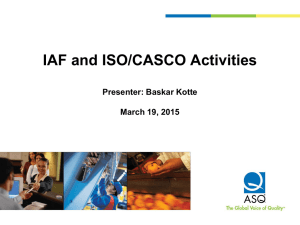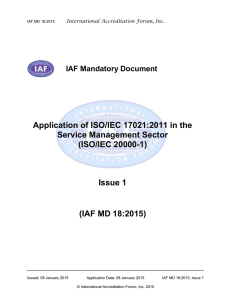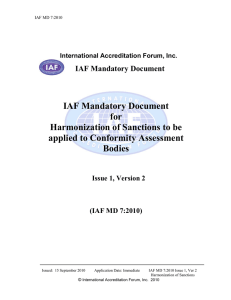IAF Technical Committee Working Group on the assessment of well
advertisement
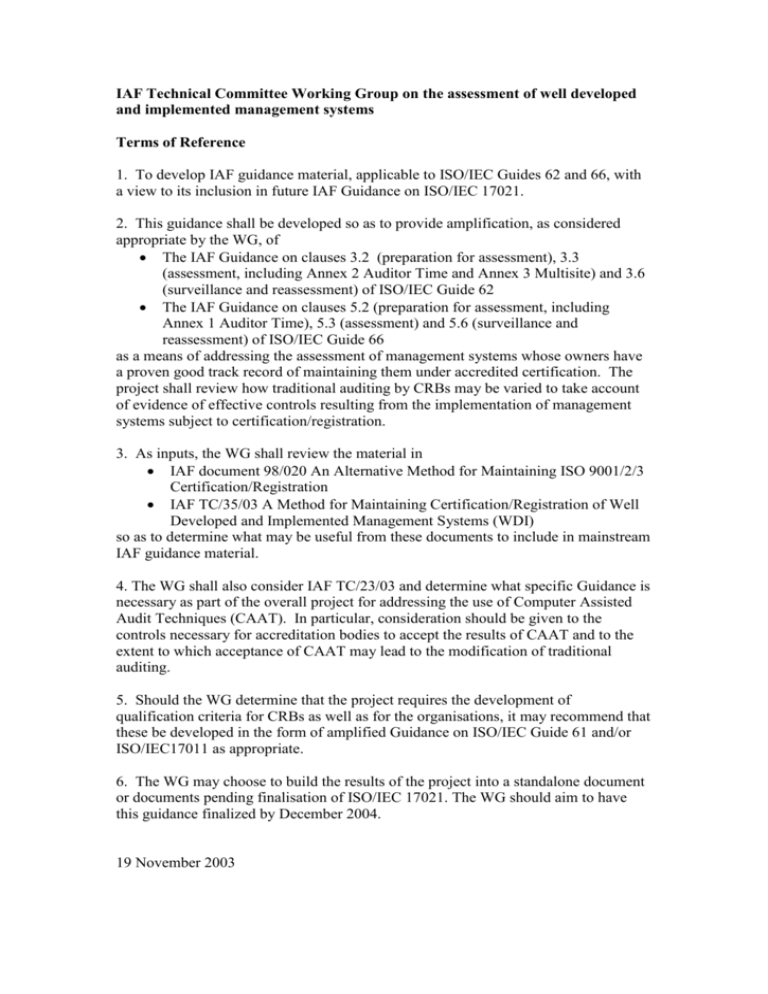
IAF Technical Committee Working Group on the assessment of well developed and implemented management systems Terms of Reference 1. To develop IAF guidance material, applicable to ISO/IEC Guides 62 and 66, with a view to its inclusion in future IAF Guidance on ISO/IEC 17021. 2. This guidance shall be developed so as to provide amplification, as considered appropriate by the WG, of The IAF Guidance on clauses 3.2 (preparation for assessment), 3.3 (assessment, including Annex 2 Auditor Time and Annex 3 Multisite) and 3.6 (surveillance and reassessment) of ISO/IEC Guide 62 The IAF Guidance on clauses 5.2 (preparation for assessment, including Annex 1 Auditor Time), 5.3 (assessment) and 5.6 (surveillance and reassessment) of ISO/IEC Guide 66 as a means of addressing the assessment of management systems whose owners have a proven good track record of maintaining them under accredited certification. The project shall review how traditional auditing by CRBs may be varied to take account of evidence of effective controls resulting from the implementation of management systems subject to certification/registration. 3. As inputs, the WG shall review the material in IAF document 98/020 An Alternative Method for Maintaining ISO 9001/2/3 Certification/Registration IAF TC/35/03 A Method for Maintaining Certification/Registration of Well Developed and Implemented Management Systems (WDI) so as to determine what may be useful from these documents to include in mainstream IAF guidance material. 4. The WG shall also consider IAF TC/23/03 and determine what specific Guidance is necessary as part of the overall project for addressing the use of Computer Assisted Audit Techniques (CAAT). In particular, consideration should be given to the controls necessary for accreditation bodies to accept the results of CAAT and to the extent to which acceptance of CAAT may lead to the modification of traditional auditing. 5. Should the WG determine that the project requires the development of qualification criteria for CRBs as well as for the organisations, it may recommend that these be developed in the form of amplified Guidance on ISO/IEC Guide 61 and/or ISO/IEC17011 as appropriate. 6. The WG may choose to build the results of the project into a standalone document or documents pending finalisation of ISO/IEC 17021. The WG should aim to have this guidance finalized by December 2004. 19 November 2003

